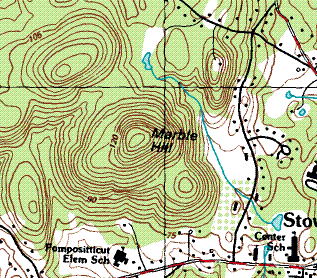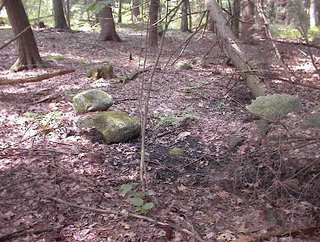I was doing an appraisal in Carlisle and found a nice drive-by rock pile site. Since you've done so much exploring there it's probable you know the site (since the piles are visible from the car). Go north on *** Street from the town hall. Between ****** Road and ***** Road on your left is a conservation trail into ******. Go about 50 yards north of the trail entrance, which is on your left, and look to your left and you'll see the piles. I only explored about an acre for 15 minutes or so and found about 30 piles. There are some large piles there and some with quartz in the center. I could see more through the trees but left as I was pressed for time. I noticed on the way out that there were piles on the other side of the street as well.
[2nd email]
I'm sending a few pictures of some of the more distinct piles from Carlisle. Maybe you'll remember if you've been here. I'll send 3 in this e-mail and 2 in the next. The first photo in this e-mail is a U-shaped enclosure that incorporates a boulder/split ledge. You can see the road in the background. The next photo is the back of the same features showing a large crack filled with rock. The 3rd photo has 2 central quartz pieces (one showing in the center) in a rock pile on a boulder. There is an unusually shaped stone perched on a pile of rock at the base of the boulder.


 [3rd email]
[3rd email]The first photo is of one of the large piles. The second is a circular depression about 2 feet in diameter in the top of this pile. Note the stones arranged in a circle around it's perimeter.







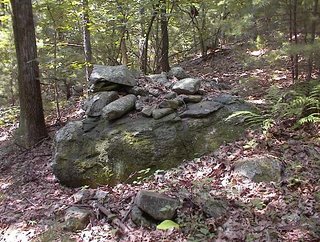


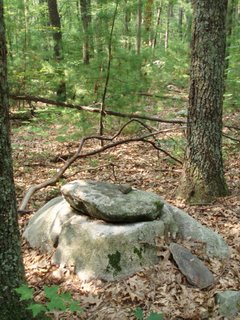
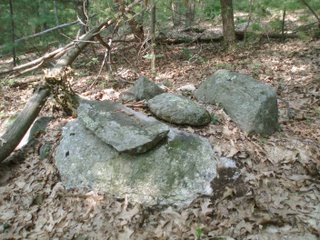

 Here is a photo of the nearly parallel walls at the bottom of the "funnel". The concavity in the hill is to the upper left in this picture:
Here is a photo of the nearly parallel walls at the bottom of the "funnel". The concavity in the hill is to the upper left in this picture:

 And here is the spring house located at the bottom of the funnel:
And here is the spring house located at the bottom of the funnel:  These structures suggest a clever arrangment of wall and well. There is at least one other funnel like this on the hill to the northwest.
These structures suggest a clever arrangment of wall and well. There is at least one other funnel like this on the hill to the northwest.




